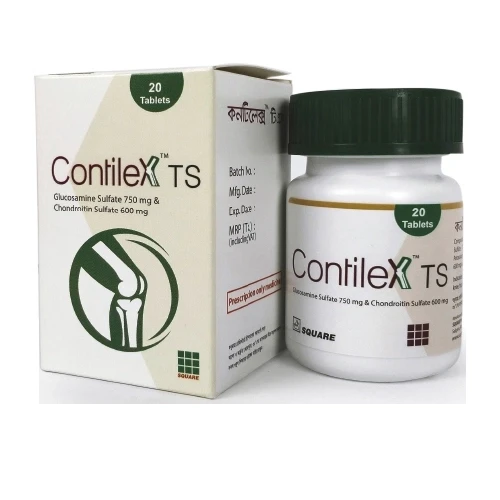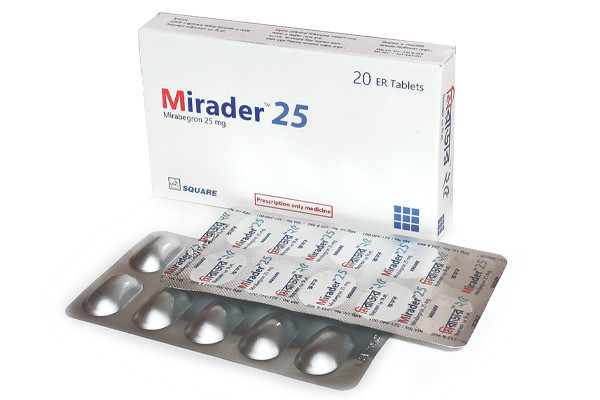

Dulox Tablet (Delayed Release, Duloxetine Hydrochloride 30 mg
Inhouse product
-
৳11.40
৳12.00 -
৳42.75
৳45.00 -
৳16.63
৳17.50 -
৳2.14
৳2.25
Reviews & Ratings
Indications
Dulox is a serotonin
and norepinephrine reuptake inhibitor (SNRI) indicated for-
- Major Depressive Disorder (MDD)
- Generalized Anxiety Disorder
(GAD)
- Diabetic Peripheral Neuropathic
Pain (DPNP)
- Fibromyalgia and
- Chronic Musculoskeletal Pain.
* রেজিস্টার্ড চিকিৎসকের পরামর্শ মোতাবেক ঔষধ সেবন করুন'
Pharmacology
Duloxetine
Hydrochloride is a selective serotonin and norepinephrine reuptake inhibitor
(SSNRI) for oral administration. Duloxetine is a less potent inhibitor of
dopamine reuptake. Duloxetine has no significant affinity for dopaminergic,
adrenergic, cholinergic, histaminergic, opioid, glutamate, and GABA receptors
in vitro. Duloxetine does not inhibit monoamine oxidase (MAO). Orally
administered Duloxetine hydrochloride is well absorbed. Elimination of
Duloxetine is mainly through hepatic metabolism.
Dosage &
Administration
Major Depressive
Disorder (MDD)-
- Starting Dose: 40 mg/day to 60 mg/day
- Target Dose: Acute: 40 mg/day (20 mg twice daily) to 60 mg/day
(once daily or as 30 mg twice daily); Maintenance: 60 mg/day
- Maximum Dose: 120 mg/day
Generalized Anxiety
Disorder (GAD)-
- Starting Dose: 60 mg/day
- Target Dose: 60 mg/day (once daily)
- Maximum Dose: 120 mg/day
Diabetic Peripheral
Neuropathic Pain (DPNP)-
- Starting Dose: 60 mg/day
- Target Dose: 60 mg/day (once daily)
- Maximum Dose: 60 mg/day
Fibromyalgia-
- Starting Dose: 30 mg/day
- Target Dose: 60 mg/day (once daily)
- Maximum Dose: 60 mg/day
Chronic
Musculoskeletal Pain-
- Starting Dose: 30 mg/day
- Target Dose: 60 mg/day (once daily)
- Maximum Dose: 60 mg/day
Some patients may
benefit from starting at 30 mg once daily. There is no evidence that doses
greater than 60 mg/day confers an additional benefit, while some adverse
reactions were observed to be dose-dependent. A gradual dose reduction is
recommended to avoid discontinuation symptoms.
* রেজিস্টার্ড চিকিৎসকের পরামর্শ মোতাবেক ঔষধ সেবন করুন'
Interaction
Both CYP1A2 and CYP2D6
isozymes are responsible for Dulox metabolism. When Dulox was co-administered
with fluvoxamine, a potent CYP1A2 inhibitor, the AUC, Cmax and t of Dulox was
increased. Other drugs that inhibit CYP1A2 metabolism include cimetidine and
quinolone antimicrobials such as ciprofloxacin and enoxacin would be expected
to have similar effects and these combinations should be avoided. Because
CYP2D6 is involved in Dulox metabolism, concomitant use of Dulox with potent
inhibitors of CYP2D6 may result in higher concentrations of Dulox.
Contraindications
Duloxetine is
contraindicated in patients with a known hypersensitivity to this drug or any
of the inactive ingredients. Duloxetine is not approved for use in treating
bipolar depression. Duloxetine should not be prescribed to patients with substantial
alcohol use or evidence of chronic liver disease. In clinical trials,
Duloxetine was associated with an increased risk of mydriasis; therefore, it
should be used cautiously in patients with controlled narrow-angle glaucoma.
Side Effects
The most commonly
observed adverse events in Dulox treated patients were nausea, dizziness, dry
mouth, constipation, decreased appetite, fatigue, somnolence, increased
sweating, hyperhidrosis and asthenia. It may slightly increase blood pressure.
No clinically significant differences were observed for QT, PR, and QRS
intervals between Dulox-treated and placebo-treated patients.
Pregnancy &
Lactation
Pregnancy: Pregnancy Category C. There are no adequate
and well-controlled studies in pregnant women; therefore, Duloxetine should be
used during pregnancy only if the potential benefit justifies the potential
risk to the fetus.
Labor and Delivery: The effect of Duloxetine on labor and
delivery in humans is unknown. Duloxetine should be used during labor and
delivery only if the potential benefit justifies the potential risk to the
fetus.
Lactation: It is unknown whether or not Duloxetine
and/or it's metabolites are excreted into human milk, but nursing while on
Duloxetine is not recommended
Precautions &
Warnings
All patients being
treated with antidepressants for any indication should be monitored
appropriately and observed closely for clinical worsening, suicidality and
unusual changes in behavior, especially during the initial few months of a
course of drug therapy, or at times of dose changes. Blood pressure should be
measured prior to initiating treatment and periodically measured throughout
treatment. Patients should be cautioned about the risk of bleeding associated
with the concomitant use of Dulox and NSAIDs, aspirin, or other drugs that
affect coagulation. Dulox should be used cautiously in patients with a history
of mania. Dulox should be prescribed with care in patients with a history of a
seizure disorder.
Use in Special
Populations
Use in the pediatric
population: Safety and efficacy
in pediatric patients have not been established
Overdose Effects
There is limited
clinical experience with Dulox overdose in humans. There is no specific
antidote to Dulox. In case of acute overdose, treatment should consist of those
general measures employed in the management of overdose with any drug. An
adequate airway, oxygenation, and ventilation should be assured, and cardiac
rhythm and vital signs should be monitored. Induction of emesis is not
recommended. Gastric lavage with a large-bore orogastric tube with appropriate
airway protection, if needed, may be indicated if performed soon after
ingestion or in symptomatic patients. Activated charcoal may be useful in
limiting the absorption of Dulox from the gastrointestinal tract.
Therapeutic Class
Serotonin-norepinephrine
reuptake inhibitor (SNRI)
Storage Conditions
Do not store above
30°C. Keep away from light and out of the reach of children.
Frequently Bought Products
Perkinil Tablet, Procyclidine Hydrochloride 5 mg
Zerocal Tablet(200 pcs), Sucralose 6.5 mg
Oxapro Tablet, Escitalopram Oxalate 5 mg
Bioprem Capsule, Biotin 5000 mcg
Deprex Tablet, Olanzapine 5 mg
Mirader Tablet (Extended Release) Mirabegron 25 mg
Gentob Ophthalmic Ointment 3 ml tube, Tobramycin 0.3%
Goustat Tablet, Febuxostat 40 mg
Product Queries (0)
Login Or Registerto submit your questions to seller
Other Questions
No none asked to seller yet
-
৳11.40
৳12.00 -
৳42.75
৳45.00 -
৳16.63
৳17.50 -
৳2.14
৳2.25

















